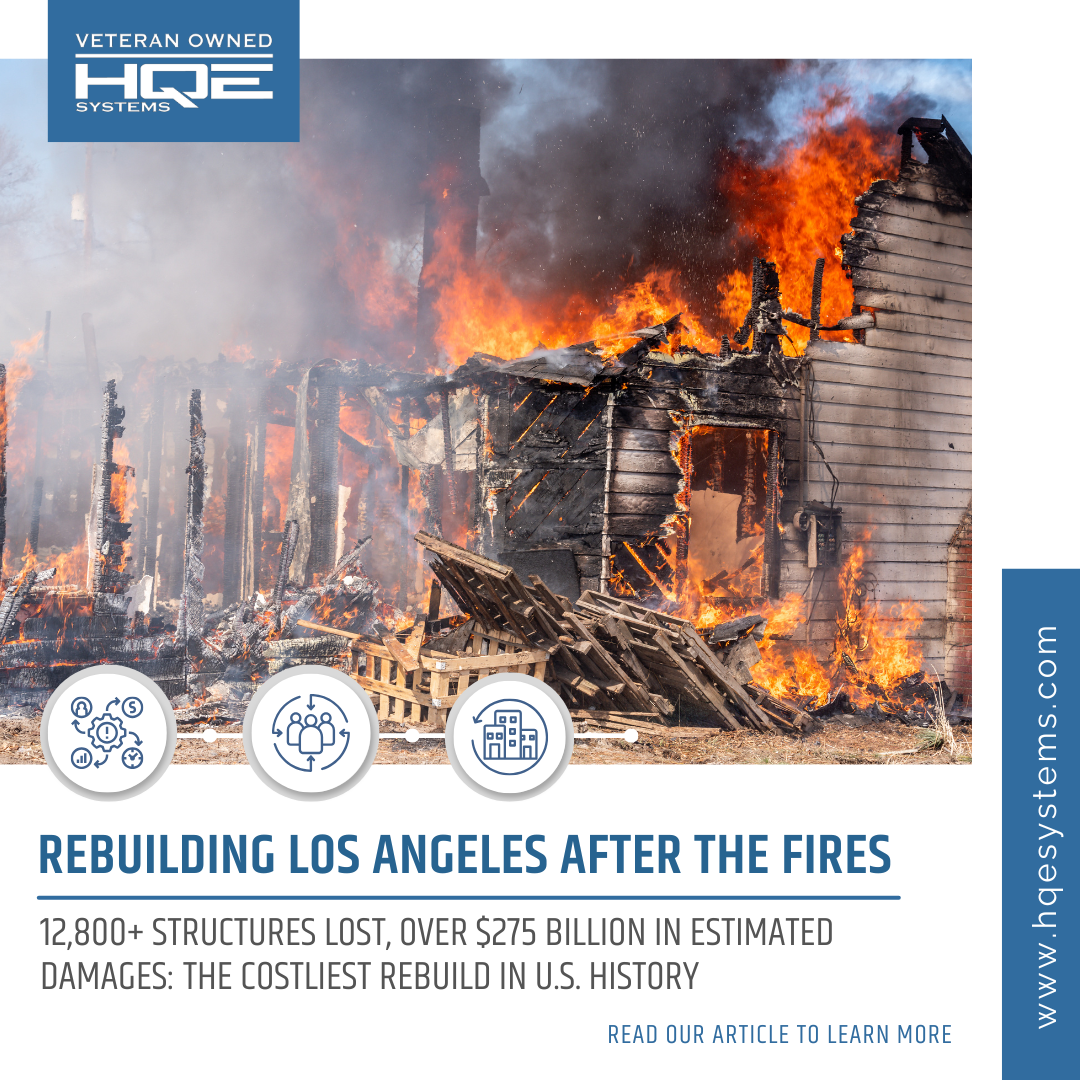From Devastation to Determination: How Los Angeles is Rebuilding Stronger After the Fires
Rebuilding Hope in the Wake of Devastation
The fires that swept through Los Angeles were more than a natural disaster—they were a wake-up call. Entire neighborhoods have been reduced to ash, over $275 billion in damages incurred, and tens of thousands displaced from their homes. The question now isn’t just how to rebuild—it’s how to rebuild smarter, safer, and stronger.
What lies ahead for Los Angeles isn’t just recovery; it’s a chance to redefine resilience. How does a city rise from the ashes while preparing for the future? The answers could shape not only Los Angeles but also the global response to climate-fueled disasters (CFR, 2025; Patch, 2025).
As of January 24, 2025, Los Angeles County is contending with multiple wildfires. The Hughes Fire near Castaic has burned over 10,300 acres and is 36% contained. The Palisades Fire has consumed 23,448 acres and is 77% contained. Rain is forecasted this weekend, which may aid firefighting efforts but also raises concerns about potential mudslides in burn areas.
Section 1: The Scale of Devastation
 The fires that swept through Los Angeles have left a trail of destruction that is difficult to comprehend. Over 63 miles of Los Angeles County have been scorched, reducing neighborhoods, businesses, and critical infrastructure to rubble. Communities in Altadena, Pacific Palisades, and Malibu now resemble ghost towns, with entire blocks flattened. Supervisor Kathryn Barger described the aftermath as a “warzone,” a stark testament to the fire’s unrelenting fury.
The fires that swept through Los Angeles have left a trail of destruction that is difficult to comprehend. Over 63 miles of Los Angeles County have been scorched, reducing neighborhoods, businesses, and critical infrastructure to rubble. Communities in Altadena, Pacific Palisades, and Malibu now resemble ghost towns, with entire blocks flattened. Supervisor Kathryn Barger described the aftermath as a “warzone,” a stark testament to the fire’s unrelenting fury.
The economic toll is staggering. AccuWeather estimates that damages and losses will total $275 billion, ranking this as one of the most expensive disasters in U.S. history. For context, the financial impact surpasses the devastating Maui wildfires of 2023 and even the $250 billion cost associated with Hurricane Helene in 2024 (Patch, 2025).
The physical losses are immense. Over 12,800 structures, including homes, schools, and businesses, have been destroyed. Beloved landmarks and vital public infrastructure are now nothing more than ash and debris.
Beyond the structural damage, the fires have displaced tens of thousands of residents. Evacuees now face a long and uncertain journey of rebuilding their lives. Many are living in temporary shelters, relying on the kindness of others while they wait for the chance to rebuild. The emotional toll is overwhelming, with countless families mourning not only the loss of property but also the sense of community that once defined these neighborhoods (CFR, 2025).
Recovery efforts must address the needs of these displaced families while also rebuilding the infrastructure that keeps the city running. Roads, utilities, and public services must be restored, and schools and businesses must be rebuilt to ensure the community can thrive again. The city must also prepare for the long-term effects of the fires, such as environmental degradation, poor air quality, and increased risk of mudslides in burned areas.
The sheer scale of devastation demands a response that goes beyond the ordinary. Los Angeles faces a defining moment in its history—a chance to rebuild not just structures, but also hope, resilience, and a future that is better prepared to withstand the growing threat of climate-fueled disasters. How the city rises from this tragedy will set a precedent for communities across the globe facing similar challenges in an era of increasing environmental risk.
Section 2: Building Smarter and Safer
As Los Angeles embarks on the journey to rebuild, the focus must be on creating a safer, more resilient city capable of withstanding the increasing risks of climate-fueled disasters. Governor Gavin Newsom’s executive order, which waives permitting requirements under the California Environmental Quality Act (CEQA) and the Coastal Act, marks a pivotal step in expediting reconstruction efforts (Gov. Newsom, 2025). However, speed alone will not be enough—sustainability and safety must define the rebuilding process.
Strengthening Building Codes
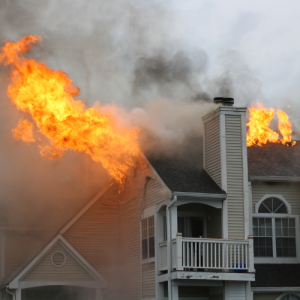 One critical step is enhancing building codes to mandate the use of fire-resistant materials and designs. These measures have already proven their worth. For example, homes built after California’s 2008 fire code reforms were far more likely to withstand the 2018 Camp Fire in Paradise, where updated structures had significantly lower damage rates compared to older ones (CFR, 2025). By implementing similar or more advanced codes, Los Angeles can ensure that homes and buildings are better equipped to survive future wildfires.
One critical step is enhancing building codes to mandate the use of fire-resistant materials and designs. These measures have already proven their worth. For example, homes built after California’s 2008 fire code reforms were far more likely to withstand the 2018 Camp Fire in Paradise, where updated structures had significantly lower damage rates compared to older ones (CFR, 2025). By implementing similar or more advanced codes, Los Angeles can ensure that homes and buildings are better equipped to survive future wildfires.
Creating Firebreaks
Defensible spaces, known as firebreaks, are another key strategy for reducing fire risk. By maintaining clear, vegetation-free zones around communities, the spread of flames can be significantly slowed, giving firefighters valuable time to act. Firebreaks not only protect individual homes but also reduce the overall fuel available to a fire, mitigating its intensity.
Reimagining Land Use
Rebuilding smarter also means rethinking where and how communities are located. High-risk areas, particularly those near wildlands, should be reimagined as green spaces that serve as natural fire buffers. Parks, golf courses, irrigated fields, and fire-resistant landscaping can reduce fuel loads while providing new recreational opportunities for residents. These green spaces also act as “carbon sinks,” helping to trap carbon dioxide and reduce the effects of climate change (CFR, 2025).
Enhancing Detection Systems
Cutting-edge fire detection and warning systems must be prioritized to ensure earlier and more effective emergency responses. IoT-enabled sensors, integrated with advanced communication platforms, can detect heat, smoke, and air quality changes in real-time, enabling authorities to issue evacuation alerts faster. These systems not only save lives but also reduce the economic toll by allowing fires to be addressed before they grow out of control.
A Model for Resilience
By adopting these strategies, Los Angeles can set an example for cities worldwide. Rebuilding efforts that prioritize climate resilience, advanced technology, and sustainable land use will create a city that is not only safer but also better prepared for the challenges of the future. Governor Newsom’s directive underscores the urgency of this task, and Los Angeles now has the opportunity to lead by example (Gov. Newsom, 2025).
This moment is about more than recovery—it’s about laying the foundation for a future where communities can thrive even in the face of climate-driven disasters.
Section 3: Addressing Insurance Challenges
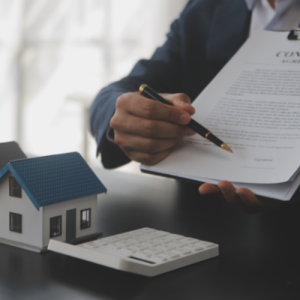 The devastating fires in Los Angeles have highlighted a growing crisis in California’s property insurance market. As wildfire risks intensify, insurers are increasingly withdrawing from high-risk areas, leaving countless homeowners dependent on the state’s FAIR Plan, a last-resort insurance program. The FAIR Plan, which held over 451,799 policies as of January 2025, has seen a staggering 41% increase in enrollments since 2023 (Patch, 2025).
The devastating fires in Los Angeles have highlighted a growing crisis in California’s property insurance market. As wildfire risks intensify, insurers are increasingly withdrawing from high-risk areas, leaving countless homeowners dependent on the state’s FAIR Plan, a last-resort insurance program. The FAIR Plan, which held over 451,799 policies as of January 2025, has seen a staggering 41% increase in enrollments since 2023 (Patch, 2025).
However, the FAIR Plan faces mounting challenges. With damage claims from the recent fires expected to soar, the program’s ability to pay out claims is uncertain. This leaves many homeowners in a precarious position, unable to secure affordable or comprehensive insurance for their properties. As the costs and risks of wildfires continue to rise, the insurance crisis threatens to hinder the rebuilding process for thousands of displaced residents.
This issue is not unique to California. Other countries have faced similar challenges and have implemented solutions to address them. For example, France mandates that all property insurance policies include natural disaster coverage, funded through a 12% surcharge on premiums. Italy has adopted a nationwide requirement for disaster insurance, ensuring all businesses are covered against catastrophic events (CFR, 2025). These international approaches highlight the need for systemic changes to make insurance more accessible and sustainable.
In Los Angeles, addressing the insurance crisis requires bold policy reforms. One approach is to incentivize fire-resistant construction through insurance discounts and tax benefits. Homes built with fire-resistant materials or in compliance with updated building codes could qualify for lower premiums, encouraging homeowners to invest in safer construction practices. Expanding state-backed insurance options, beyond the FAIR Plan, could also provide greater coverage flexibility for residents in high-risk areas.
Additionally, public-private partnerships could play a role in mitigating risk. Collaborating with insurers to develop shared risk pools or offering subsidies for fire-prevention upgrades can help balance the financial burden between homeowners, insurers, and the state.
As Los Angeles rebuilds, ensuring affordable and accessible insurance must be a priority. Without it, recovery efforts will be stymied, leaving communities vulnerable to future disasters. By adopting forward-thinking reforms, the city can protect its residents and serve as a model for tackling the growing challenges of climate-fueled disasters.
Section 4: The Path Forward
Rebuilding Los Angeles after the devastating fires of 2025 is more than a logistical challenge—it’s a pivotal opportunity to redefine resilience in the face of a changing climate. The city has the chance to become a global leader in climate-smart recovery, setting an example for how communities can adapt to growing environmental risks.
Governor Gavin Newsom’s executive order to expedite rebuilding by waiving permitting requirements under CEQA and the Coastal Act is a crucial first step. Streamlining processes ensures recovery can begin quickly, but the larger question is how to rebuild in a way that addresses the long-term threats posed by climate-fueled disasters (Gov. Newsom, 2025).
Building Climate-Resilient Communities
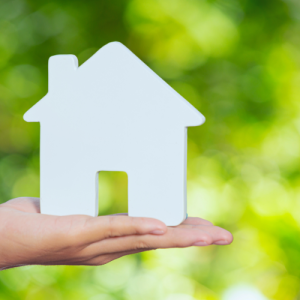 Los Angeles must prioritize climate-smart building practices to protect residents and reduce future risks. Updated building codes should mandate the use of fire-resistant materials and incorporate designs that minimize vulnerability to wildfires. For example, studies have shown that homes built after California’s 2008 fire code reforms are significantly more likely to survive wildfires than older structures (CFR, 2025).
Los Angeles must prioritize climate-smart building practices to protect residents and reduce future risks. Updated building codes should mandate the use of fire-resistant materials and incorporate designs that minimize vulnerability to wildfires. For example, studies have shown that homes built after California’s 2008 fire code reforms are significantly more likely to survive wildfires than older structures (CFR, 2025).
Urban planning must also evolve to include strategic land use. High-risk areas that were previously residential could be repurposed into fire-resistant green spaces, such as irrigated parks, bike paths, and recreational fields. These spaces not only reduce fuel loads but also act as natural buffers, slowing the spread of wildfires while contributing to the city’s overall sustainability goals.
Enhancing Emergency Preparedness
Another essential component of the path forward is strengthening emergency response systems. Cutting-edge technology, such as IoT-enabled fire detection sensors and AI-driven early warning systems, can dramatically improve response times and save lives. These systems, integrated with comprehensive communication platforms, will ensure residents and first responders have real-time information during critical moments.
Enhanced evacuation planning and expanded evacuation routes must also be prioritized. With wildfires becoming more frequent and intense, ensuring safe and efficient evacuations is key to protecting lives and reducing chaos during emergencies.
A Global Model for Resilience
The rebuilding of Los Angeles has implications far beyond the city limits. As climate change intensifies disasters worldwide, other cities will look to Los Angeles for guidance on recovery and resilience. By adopting bold reforms and forward-thinking strategies, Los Angeles can establish itself as a model for how urban centers can thrive in the face of adversity.
This moment is not just about repairing the damage—it’s about building a city that is stronger, safer, and better prepared for the challenges ahead. With innovative planning, climate-conscious policies, and advanced technology, Los Angeles can lead the way in redefining resilience for the modern era (CFR, 2025).
Section 5: HQE Systems and the Rebuilding of Los Angeles
As Los Angeles undertakes the monumental task of rebuilding after the devastating fires of 2025, the need for expert coordination, advanced technology, and comprehensive recovery solutions is clear. HQE Systems is uniquely positioned to support this recovery, offering innovative tools and services designed to streamline rebuilding efforts and enhance resilience for the future.
Comprehensive Recovery Management
 HQE Systems has extensive experience managing complex recovery projects across California, including areas affected by catastrophic wildfires like Paradise and the Camp Fire. Our team specializes in effective debris removal, hazardous material (HAZMAT) mitigation, and critical infrastructure restoration. Utilizing GIS mapping and real-time dashboards, HQE ensures recovery efforts are executed efficiently and transparently, meeting FEMA and state compliance standards at every step.
HQE Systems has extensive experience managing complex recovery projects across California, including areas affected by catastrophic wildfires like Paradise and the Camp Fire. Our team specializes in effective debris removal, hazardous material (HAZMAT) mitigation, and critical infrastructure restoration. Utilizing GIS mapping and real-time dashboards, HQE ensures recovery efforts are executed efficiently and transparently, meeting FEMA and state compliance standards at every step.
For Los Angeles, this expertise means faster removal of debris, safer handling of hazardous materials, and smoother coordination with FEMA, state agencies, and local governments. By acting as a central liaison, HQE eliminates bottlenecks in the recovery process, ensuring resources are directed where they are needed most.
Enhancing Community Engagement
Rebuilding a city isn’t just about infrastructure—it’s about people. HQE Systems excels in community engagement, using multi-channel communication plans to keep residents informed about recovery progress, road closures, and timelines. Translating materials into multiple languages ensures inclusivity, while public forums and community meetings give residents a voice in the recovery process.
For vulnerable populations, HQE provides targeted outreach to ensure resources reach those who need them most. By fostering trust and transparency, HQE helps rebuild not only homes but also a sense of community and hope.
Innovative Technology for Resilience
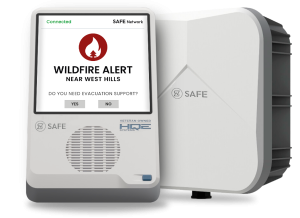 HQE’s advanced technologies, such as the SAFE Network and SMART Alert Software, are invaluable for rebuilding Los Angeles with resilience in mind. The SAFE Network provides reliable communication during emergencies, while SMART Alert integrates real-time sensor data to automate alerts for fire, weather, and other threats. These tools can enhance early warning systems and support future disaster preparedness.
HQE’s advanced technologies, such as the SAFE Network and SMART Alert Software, are invaluable for rebuilding Los Angeles with resilience in mind. The SAFE Network provides reliable communication during emergencies, while SMART Alert integrates real-time sensor data to automate alerts for fire, weather, and other threats. These tools can enhance early warning systems and support future disaster preparedness.
HQE also employs IoT-enabled fire detection systems and AI-driven analytics to monitor environmental risks, ensuring the city remains proactive against future disasters. These systems are essential for Los Angeles to build smarter and safer.
Financial Accountability and Guidance
Navigating recovery funding is complex, but HQE simplifies the process by providing FEMA reimbursement support, insurance claim guidance, and compliant financial reporting. Real-time cost tracking tools and detailed expense dashboards ensure efficient use of funds, helping the city maximize its recovery budget while avoiding delays.
A Trusted Partner in Recovery
 As a California-based, service-disabled veteran-owned business, HQE Systems has a proven track record of delivering results when it matters most. With over 1,013 completed projects in mass notification and extensive experience in disaster recovery, HQE is equipped to lead Los Angeles through this critical moment and into a more resilient future.
As a California-based, service-disabled veteran-owned business, HQE Systems has a proven track record of delivering results when it matters most. With over 1,013 completed projects in mass notification and extensive experience in disaster recovery, HQE is equipped to lead Los Angeles through this critical moment and into a more resilient future.
Los Angeles faces an extraordinary challenge, but with HQE Systems as a partner, the city can rebuild stronger, safer, and ready to face the future.
HQE Systems is a certified Veteran Owned Company. For more information about HQE Systems Inc. and its emergency management, electronic security, and integration solutions, please visit www.hqesystems.com.

Contact: David Ditto (Early Warning Systems Subject Matter Expert)
Email: David.Ditto@hqesystems.com
Phone Number: (843) 872-7020
____________________
HQE Systems, Inc. | HQE is a Minority-Owned Service Disabled Veteran Owned Small Business (SDVOSB) providing full solutions for: Mass Notification Systems, Electronic Security Systems, Software Development Services, Contract Support, and Prototyping Services. As a brand-agnostic solutions provider, HQE prides itself in providing the BEST solution for the project. HQE possesses over 30+ factory certifications and reseller licenses to ensure our clients receive the highest quality service at the ideal budget. HQE can provide full design, installation, integrations, upgrades, and long-term maintenance support for any size and scope project.

